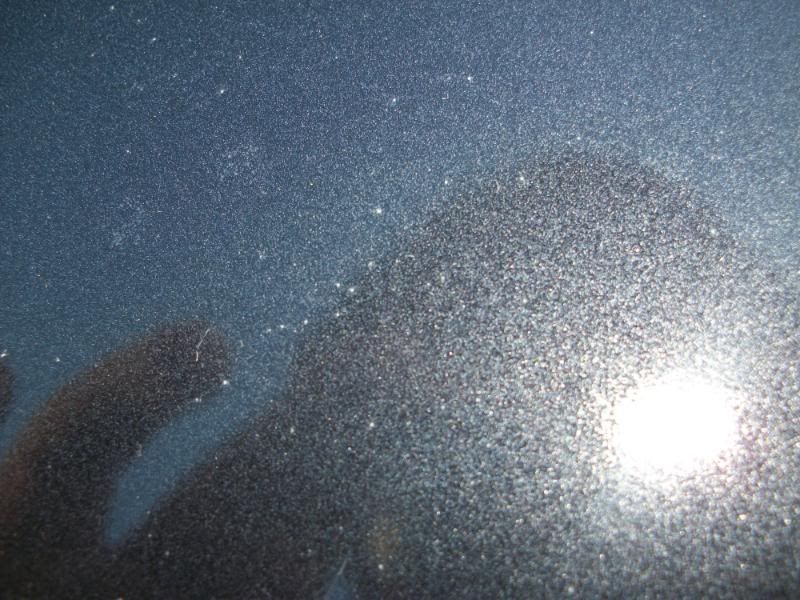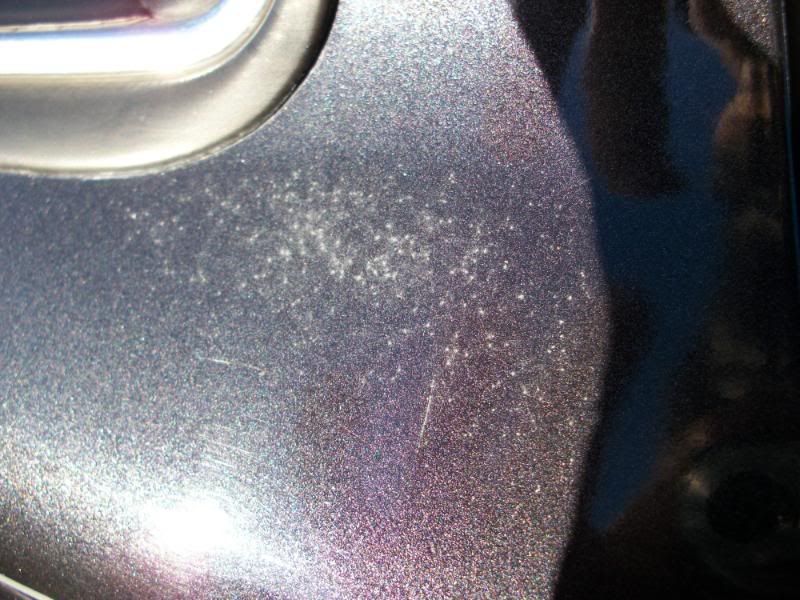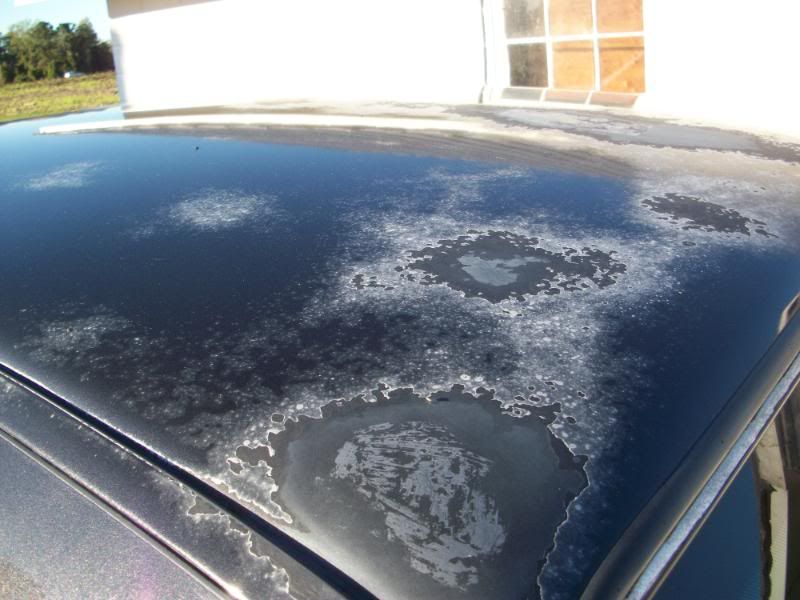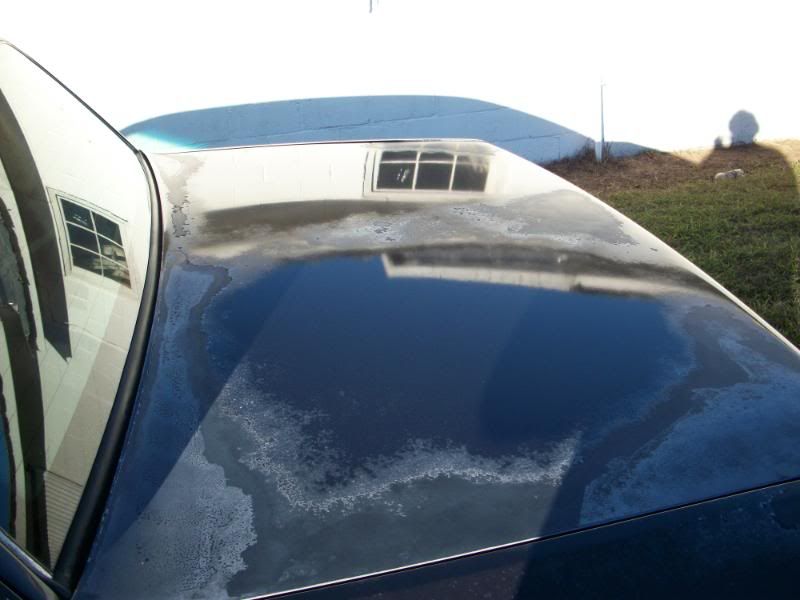Mike - in talking about clear coat failure - is there any way to prevent it?
There's only three people that I've ever spoken to that are knowledgeable about clear coat paint technology and what causes them to fail, these would be,
- Dr. David Ghodoussi
- Claude Sevigny
- Prefers to remain anonymous
The primary causes of clear coat failure are,
- Exposure to UV light, the closer to the sun the more damaging the effects, this means geographical locations nearest the equator.
- Too thin of a top coat - Top Coat = the clear layer of paint.
- Neglect and extreme neglect of the top coat.
- Using harsh chemicals and incorrectly using abrasive products.
- Swirled and scratched paint - Swirls and scratches in the paint open the paint up allowing corrosive elements to more easily deteriorate the paint faster.
You can only control a few of the above factors so do the best you can with what you do have control over.
When it comes to item #2, I spoke with Dr. David Ghodoussi about this and he shared some VERY INTERESTING information.
First, some of you probably don't know this but Dr. G as a part of his work background has worked for a number of Paint Manufacturers. These would be the paint companies that provide paint for the OEM and Refinishing industries.
He told me when he was working on creating clearcoat paint technology, this would be back in either the late 1970s or into the 1980s, they of course did TESTING. They found that
less than 2 mils of clear paint over the basecoat would lead to pre-mature paint failure.
Simply put, with less than 2 mils of clear, there wouldn't be enough paint overall to hold-up over time. It's simply not enough "substance" to withstand exposure to sun rays and the elements.
They found that at least 2 mils were needed to provide enough substance to create the final matrix of paint, that is the e-coat, primer, basecoat and clearcoat - that this amount of film build could and would hold up to the elements.
THIS IS WHY CARS GET AT LEAST 2 mils OF CLEARCOAT AT THE FACTORY. NO MORE. NO LESS
Now I'm not an expert at car manufacturing, but I know that to spray MORE PAINT on a GRAND SCALE (that's what car manufacturing plants do, build cars on a huge scale), that spraying more paint means more gallons or tons of paint being sprayed and this equates to more money and also more time for the paint application process.
So my educated guess is, car manufactures could spray more paint but they don't, the spray "enough" paint for the paint to hold up for normal wear-n-tear and that's it.
Paint the car and send it on down the line for further assembly.
This is why it's safe to say, when it comes to the factory finish on a modern car, the clear layer of paint is approximately 2 mils. It might be more... hopefully not less. But when we the detailing community work on our own cars or someone else's car, we should be knowledgeable about the thin aspect of factory paint and this is the reason for the sage advice,
Use the least aggressive product to get the job done
Now this is totally different when you go to your local body shop and get a CUSTOM paint job. If you're getting your favorite toy painted with a custom paint job, the painter will tend to spray a thicker layer of paint than you'll get with an OEM finish.
The only
rant anyone ever sees me go on is when I rant about car manufactures not putting more clear paint on their cars at the factory level.
In a perfect world, at least companies like Ford, Mercedes-Benz, BMW, Nissan, Chrysler, Toyota, Honda, etc. should provide their customers the option to order their car with an extra coat or two of clear paint instead of the
cover coats that are the industry norm.
Do the various high quality waxes and sealants we discuss here stave off the failure or are we only prolonging the inevitable?
Nothing outside of a
garage or
carport will block 100 percent of everything that will attack your car. If you're into vinyl wraps that would be a way to protect the paint but you wouldn't actually see the paint.
Dr. David Ghodoussi has a product called Optimum Car Wax which uses a patented UV protection ingredient and process that offers the same UV protection as the UV protection ingredients used in the actual clear layer of paint on your car.
Plus, while I know most people think a spray on wax is a glorified spray detailer, this particular wax really does leave the UV protection ingredients on the surface.
If the ingredients were part of a traditional paste wax or liquid wax, when you wiped off the excess residue you would wipe off the protection ingredients.
Could type more on this by have other projects to get back to.
Oh yeah... I think I touch on the above on one of our upcoming TV show episodes... not deep but I do use and show the OPT Car Wax.











